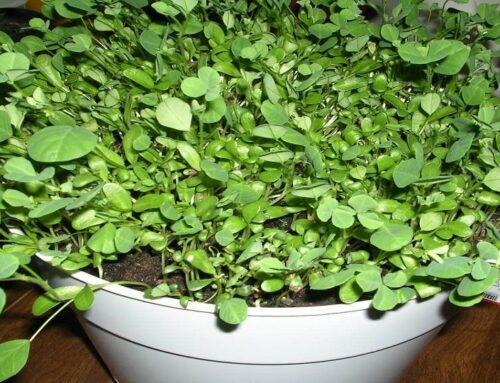Parsley (Petroselinum crispum formerly known as Petroselinum hortense) is a biennial herbal spice crop belongs to the family Apiaceae (Umbelliferae). It can successfully be cultivated both in tropical and temperate climates. Commercially it is grown as an annual crop. Its economically significant part is its aromatic leaves. Parsley is believed to be originated in the region comprising of Europe and Western Asia.
According to USDA, fresh, raw parsley is a powerhouse of nutrients. A 100g serving of fresh parsley provides about 36 kcal of energy. Moisture presence is about 87.7 % of its fresh weight. A detailed account of nutrients present in fresh, raw parsley is given below:
Water-87.71 g; Energy-36 kcal; Protein-2.97 g; Total lipid (fat)-0.79 g; Carbohydrate-6.33 g; Fiber-3.3 g; Sugars-0.85 g; Calcium, Ca-138 mg; Iron, Fe-6.2 mg; Magnesium, Mg-50 mg; Phosphorus, P-58 mg; Potassium, K-554 mg; Sodium, Na-56 mg; Zinc, Zn-1.07 mg; Vitamin C-133 mg; Thiamin-0.086 mg; Riboflavin-0.098 mg; Niacin-1.313 mg; Vitamin B-6-0.09 mg; Folate-152 Aug; Vitamin A-8424 IU; Vitamin E-0.75 mg; Vitamin K-1640 Aug; Saturated FA-0.132 g; MUFA-0.295 g and PUFA-0.124 g
Fresh and chopped parsley leaves are rich in Vitamins, particularly vitamin K, vitamin A, folate (folic acid), and vitamin C (ascorbic acid). They are also rich in minerals particularly calcium, and potassium.
We have a book with detailed information on this plant and for more info, please click here…
Both kindle eBook version and Paperback version of this plant is available at all Amazon stores. For more info, click here…
Dried Leaf Flakes as Food Flavouring Agent and Condiment: Processing parsley leaves by drying (dehydration) is recommended for extending the shelf life of the produce. Dehydrated parsley leaves or leaf flakes have a good market also. A detailed account of nutrients present in dried parsley flakes is given below:
Water-5.89 g; Energy-292 kcal; Protein-26.63 g; Total lipid (fat)-5.48 g; Carbohydrate-50.64 g; Fiber-26.7 g; Sugars-7.27 g; Calcium, Ca-1140 mg; Iron, Fe-22.04 mg; Magnesium, Mg-400 mg; Phosphorus, P-436 mg; Potassium, K-2683 mg; Sodium, Na-452 mg; Zinc, Zn-5.44 mg; Vitamin C-125 mg; Thiamin-0.196 mg; Riboflavin-2.383 mg; Niacin-9.943 mg; Vitamin B-6-0.9 mg; Folate, DFE-180 Aug; Vitamin A-1939 IU; Vitamin E-8.96 mg; Vitamin K-1359.5 Aug; *Saturated FA-1.378 g; MUFA-0.761 g and PUFA-3.124 g
Parsley leaf flakes are rich in Vitamins, particularly vitamin K, vitamin A, folate (folic acid), and vitamin C (ascorbic acid). Mineral content in dried leaves is much higher than that of fresh leaves. They are rich in minerals such as calcium, magnesium, phosphorous and potassium.
Freeze-Dried Parsley Leaves as a Food Flavouring Agent: Freeze-dried parsley leaves also have a good market as a seasoning agent. Freeze-drying also helps extend the shelf life of the fresh produce. A detailed account of nutrients present in freeze-dried parsley leaves is given below:
Water-2 g; Energy-271 kcal; Protein-31.3 g; Total lipid (fat)-5.2 g; Carbohydrate-42.38 g; Fiber-32.7 g; Calcium, Ca-176 mg; Iron, Fe-53.9 mg; Magnesium, Mg-372 mg; Phosphorus, P-548 mg; Potassium, K-6300 mg; Sodium, Na-391 mg; Zinc, Zn-6.11 mg; Vitamin C-149 mg; Thiamin-1.04 mg; Riboflavin-2.26 mg; Niacin-10.4 mg; Vitamin B-6-1.375 mg; Folate-194 Aug and Vitamin A-63240 IU
We regularly publish informative videos on various “Food, Agriculture, Gardening and Horticulture” topics. You may view these videos here…
You may also check out our Digital Publishing Services for Food, Agriculture, Gardening and Horticulture Sector by visiting this link







Leave A Comment
You must be logged in to post a comment.